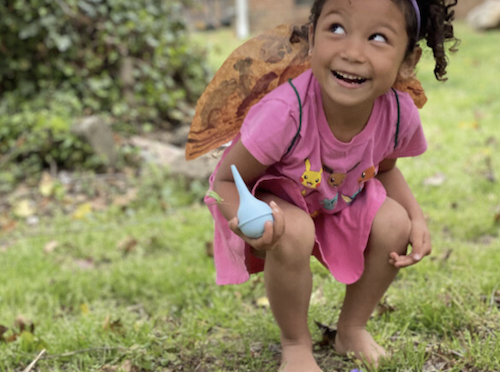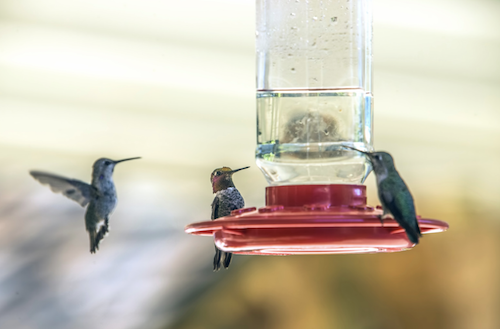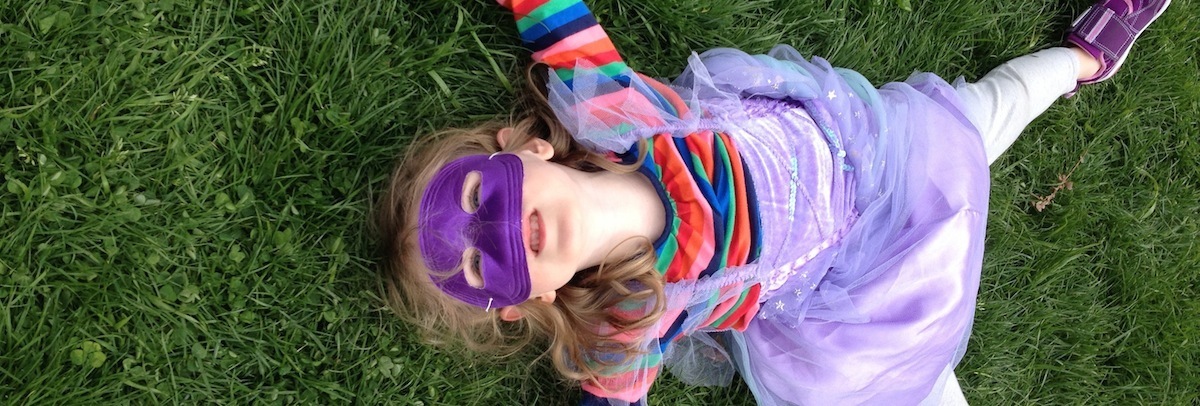Celebrate Hummingbirds!
-
Age: 0 to 8+
-
Time: 1 hour+
-
Materials: various household materials
- Skills: Imagination, Naturalist, Empathy
Hummingbirds are the smallest migrating birds in the world (weighing less than a dime!). Yet, what they lack in size, they more than make up for with their incredible agility. Hummingbirds fly like no other, flapping their wings more than 50 times per second! Hummingbirds are also fantastic pollinators, using their long, slender beak to drink nectar, spreading pollen from flower to flower in the process. In honor of National Hummingbird Day on September 3rd, we invite families to learn more about these fascinating creatures and try some of these ways to help care for hummingbird friends.
This activity is featured in our September Activity Calendar. If you do not yet have your free copy, visit tinkergarten.com/calendar today!
The Guide
Learn about hummingbirds!
Download Audubon's interactive guide to hummingbirds for kids to learn more about these amazing birds. Watch these videos of hummingbirds in flight from National Geographic.
Play like hummingbirds (and nurture empathy)!
Pretending to be a creature is a super way for kids to take on another’s perspective, a cornerstone of cognitive empathy. Here are some ideas:
- Make wings! The addition of a simple prop or costume may be all your child needs to jump right into active imaginative play. Turn a piece of fabric, paper bag or cardboard into hummingbird wings (see how here). Kids can enjoy fluttering around their outdoor space in search of colorful flowers. As an extra challenge, invite kids to search for objects that are red (the hummingbird’s favorite color)!
- “Sip” nectar! Place some cups filled with water around your outdoor space. Offer kids an eyedropper or turkey baster (or even an old nasal aspirator from your baby days) and invite them to flutter from one station to the next, using their tool to “sip” nectar.
Care for hummingbird friends!
Most hummingbirds start their migration south in August and September, making late summer and early fall the perfect time to offer our fluttering friends some extra energy for their long journey.
- Provide food for migrating hummingbirds:
- To make hummingbird “nectar”, combine 1 part sugar to 4 parts water. Note: While store-bought nectar is often colored red, it is not recommended to add red food dye to your sugar water solution. After all, natural nectar is clear in color and the dye may not be safe for hummingbirds.
- Pour your sugar water solution in a store-bought hummingbird feeder or make your own. Fill a spice container, remove the lid (leaving on the cap with holes) and hang it up with twine. Or, drill holes in the lid of a food container (e.g. plastic peanut butter jar), fill with sugar water solution and hang.
- As an extra treat for hummingbird friends, you can also put out some cut-up fruits like pears and oranges, which not only provide sugar, but also attract protein-rich insects.
- Plant a hummingbird garden: Choose flowers that provide lots of nectar as well as red and bright pink flowers that attract hummingbirds. This resource from the Audubon Society has tips on which plants attract hummingbirds and how to create a hummingbird-friendly garden.
- Add a splash of red! To help hummingbirds find their food, paint rocks red (their favorite color) and place them near your feeder and/or flowers.
Why is this activity great for kids?
Thinking about the needs of other creatures and creating something to meet those needs is a super way to nurture two forms of empathy kids can bolster when they are young: cognitive empathy (taking another's perspective) and compassionate empathy (acting to support the needs of someone else). And, when kids become helpers to hummingbirds, they learn how interconnected all living things are and how each of us can make a difference.






